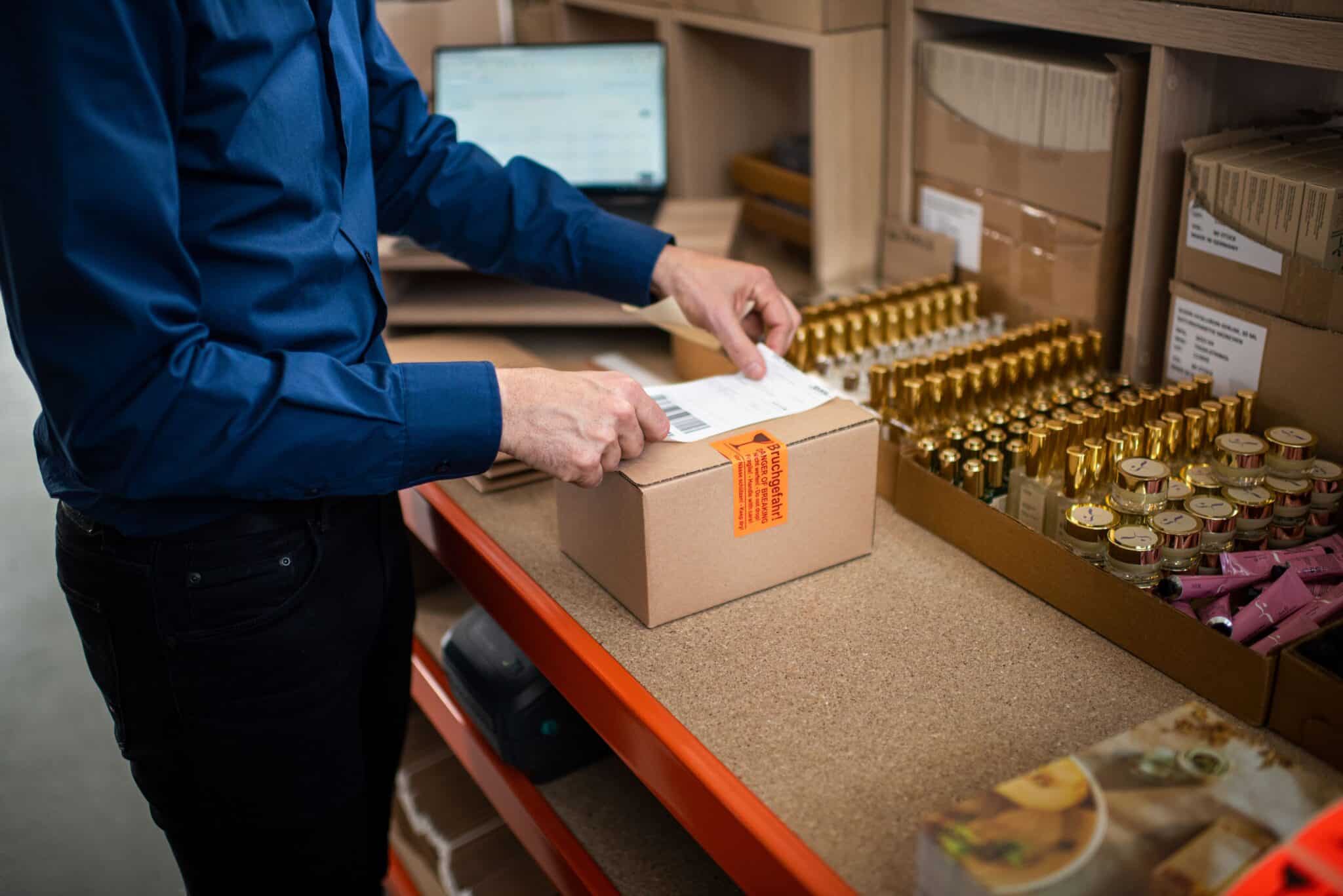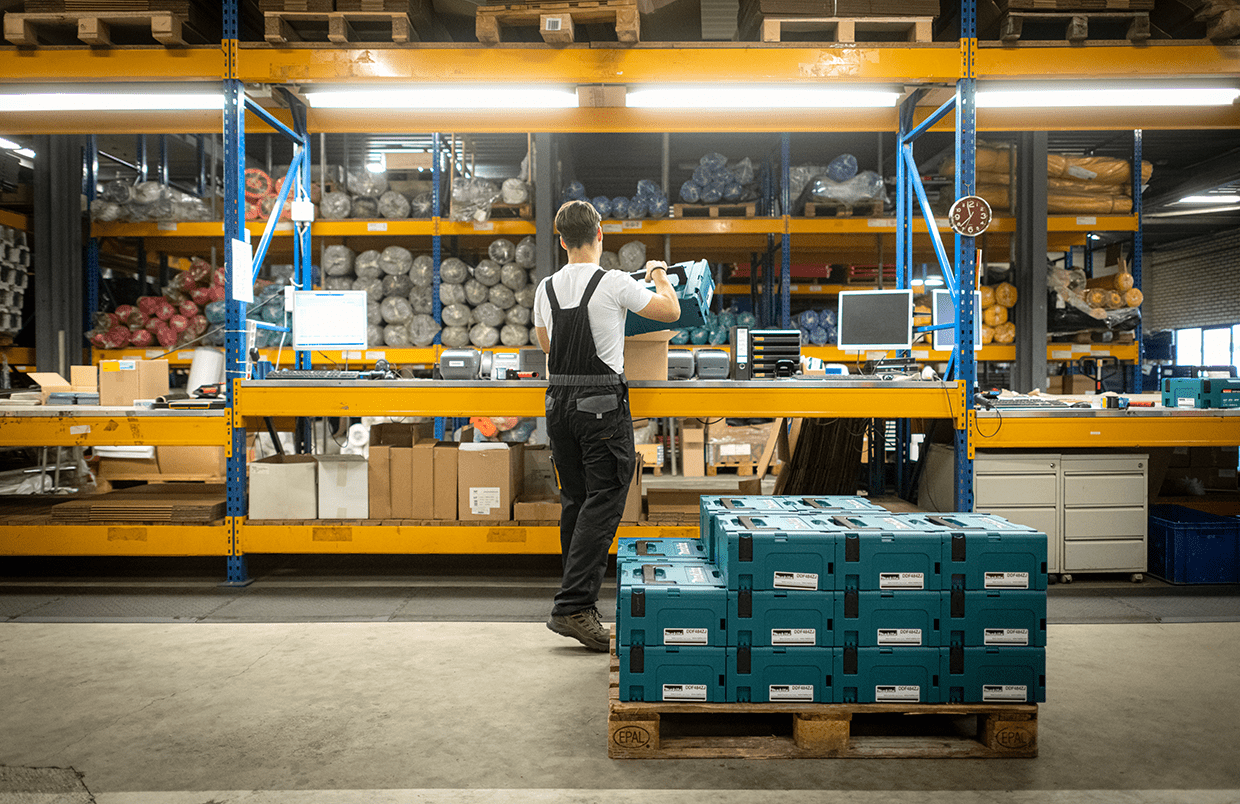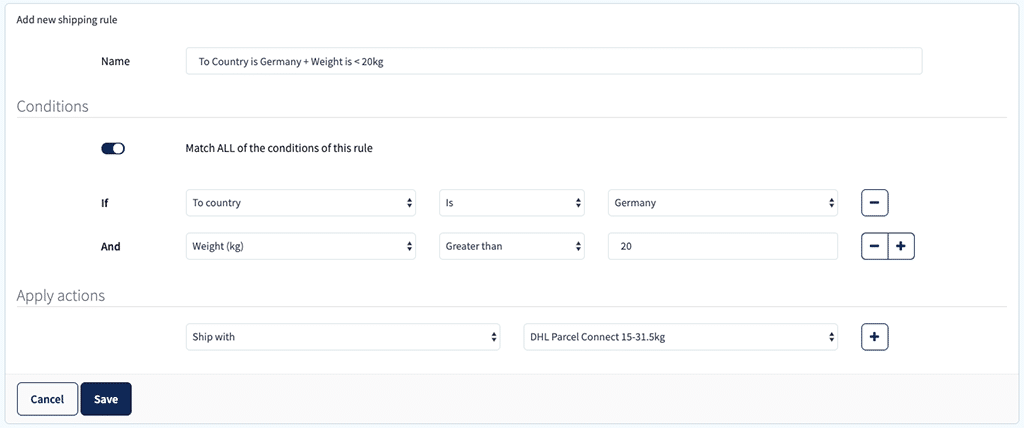Shipping surcharges are a notorious pain in the backside. As you’re working in e-commerce, you’ve probably had at least one or two shipping surcharge surprises in the last year or so. They’re fun, right? The best kind of surprise.
Shipping surcharges are particularly nasty and volatile in the current unstable economic climate. The main surcharge that is causing this unpredictability is fuel surcharges which increase every time petrol prices increase. This makes forecasting and planning a real challenge.
Though it’s not all doom and gloom. Sendcloud comes bearing good news. There are well-practised strategies for avoiding shipping surcharges, and you’ll find 6 of them in this article.
Plus, you’ll find answers to the following questions:
- What are shipping surcharges?
- What are the most common surcharges?
- How are surcharges calculated?
- How can surcharges be avoided?
What are shipping surcharges?
You probably already know, but here goes…
A shipping surcharge is an additional fee added to the shipping cost by the courier. Couriers charge surcharges for almost all additional services outside of standard shipping.
Surcharges compensate for expenses for additional processing, unusual deliveries, or other costs that arise during shipping. This often occurs with products with exceptional requirements or circumstances. We’ll dive into this later.
Additionally, many couriers often charge shipping surcharges for fluctuating fuel prices.
Industries with the most surcharges
We analysed data from 23,000+ online shops that ship with Sendcloud. Due to atypical packaging and various shipping routes, the most surcharges are incurred in the following e-commerce industries:
- Clothing & Fashion
- Home, Garden & DIY
- Food & Beverages
The most common shipping surcharges
Which surcharges are relevant to you typically depend on your products and business model. However, fuel surcharges and seasonal surcharges are calculated independently and in addition to regular surcharges.
Based on 700,000 deliveries with surcharges analysed by Sendcloud, these are the most common surcharges:
- Fuel surcharges
- Seasonal surcharges
- Surcharges for private delivery
- Non-bendable packages
- Illegible addresses
- Incorrect weight classes
Let’s dive a little deeper into the most common shipping surcharges.
Fuel surcharges
Fuel surcharges are additional fees for a package based on current petrol prices. These are charged in addition to the shipping cost based on a certain percentage. The percentage depends on these factors:
- Current fuel price
- Selected package service
- Package size
- Distance to the destination
When the fuel price increases, couriers also increase their surcharges to cover the additional costs. It’s common for the surcharge to be adjusted monthly based on the current fuel price, but it can also happen more frequently.
You can view the current fuel surcharges with each respective courier.
Surcharges due to packaging
Surcharges due to incorrect packaging can occur if the package does not meet the courier’s requirements. The most common reasons for surcharges due to packaging are:
- Size: The package exceeds the minimum or maximum dimensions.
- Weight: The package is too light or too heavy.
- Shape: The package cannot be processed automatically on conveyor belts (e.g. tubes, L-shaped or glued-together boxes). This is also known as NC (non-conveyable) surcharges.
- Special handling: The package is labelled “fragile.”
- Legibility: The label cannot be read or needs to be re-labelled due to incorrect address information.

Surcharges due to destination
Surcharges due to destination can occur when a package is shipped to a destination that requires special requirements or is associated with higher costs. The most common reasons for surcharges due to destination are:
- Outlying areas: The delivery address is located in an uninhabited, rural, or remote area. This may also include islands.
- Private delivery: The package is delivered to a private address that is not a business address. Some shipping service providers charge a fee for this.
- Address correction: The label needs to be re-labelled due to incorrect address information.
- Customs clearance: The package is shipped across a country border and has special requirements in customs, such as missing documents, storage costs, or tolls.
Surcharges due to a specific time
Surcharges can also occur to ensure the best possible processing outside regular business hours or during peak times.
How are shipping surcharges calculated?
We analysed 700,000 deliveries with surcharges and found that the surcharges per shipment average €1.10. If you’re shipping over a thousand packages per month, this really adds up.
When are surcharges calculated?
Most surcharges are only calculated by the courier after a package has been processed. Only when a package arrives at the sorting centre can it be measured and a decision made about whether or not it can be processed automatically.
As a result, most surcharges are not visible when you pay for your label, but only on the invoice afterwards. In some cases, surcharges may appear weeks or months after the original package was shipped.
How are shipping surcharges calculated by parcel services?
Getting an overview of shipping surcharges is difficult as each courier has its own rules and fees. It’s worth checking in advance which surcharges are relevant for your products and shipping methods.
You can also use Sendcloud’s courier overview to find the shipping conditions of the most popular shipping service providers. Or check out the help centre to find some common surcharges of the parcel services you use from Sendcloud:
We want to make surcharges for online shops that use Sendcloud as transparent as possible. Find out here how you can view the surcharges of the couriers on your Sendcloud invoice.
6 Strategies to Avoid Shipping Surcharges
1. Know your products and their requirements
Weight and size
Making sure your package has the correct weight and size for your shipping option is important. However, the requirements do vary depending on the courier.
For example, a small package may weigh up to 3 kg with DPD, but only 2 kg with DHL. Check the exact requirements of each courier and find out which shipping option is most suitable for your products.
Additionally, it’s important to keep an eye on the dimensions in relation to volumetric weight and girth measurement, as surcharges can lurk there.
Shape and fit
Each package must fit onto the processing belt in the sorting centre. If it doesn’t, a non-conveyable surcharge will be given. Ensure when packing your products the box adheres to the given measurements and can easily run through the processing belt.
International shipping
Depending on what products you are shipping and where, additional documents may be required for international shipping. Include the complete and correctly filled out documents, such as a commercial invoice, customs declaration, and certificate of origin with your delivery. This will help you avoid waiting times and processing costs in customs.
Head on over to our full guide to international shipping if you’re looking for more information on customs forms and everything you need to ship abroad.
2. Address and place your label correctly
This one’s pretty obvious, but it’s worth reminding: the address on the label must be legible. If the print quality of your label printer is not great, make sure to check the settings. It might be set to low quality. Also, the label must be stuck horizontally on the longest side of the package so the barcode can be correctly detected by the automatic scanners.
Use address validation
Certain mandatory fields in your checkout process ensure that no important address information is missing. To verify that the addresses provided by your customers are correct, you can also use address validation.
Shipping software such as Sendcloud have this integrated into the order overview and will alert you if something is wrong. For example, the postcode is missing.

3. Choose the right shipping service providers and methods
Tip: Our shipping price calculator can help you select the appropriate shipping options based on the dimensions, weight*, and the destination country of your package. Simply create a free account and use the shipping price calculator to get an overview of the possible shipping methods.
*the volumetric weight is not taken into account here and must be checked separately with the courier services.
Multi-carrier shipping
A multi-carrier strategy makes it possible to find the right courier and shipping option for each package. You can benefit from the strengths of different shipping service providers and save money.
“It’s worth keeping all shipping options on the table, especially if you sell an eclectic range of products. With a multi-carrier strategy, you can choose the best combination of price and quality.” – Kevin Spindler, Shipping Expert for Enterprise Businesses, Sendcloud.
Fuel surcharges
This one’s tricky. All you can really do is compare the fuel surcharges of the courier to get the best rates. The issue here is that fuel surcharges fluctuate so frequently that it can cost a fair bit of time.
One faultless strategy is to switch to courier services that have last-mile transportation that is independent of fluctuating fuel prices. These could be courier services with electric vehicles. The issue here is that shipping prices are usually higher in these cases. Although, this strategy allows for better forecasting due to less fluctuation.
4. Shorten the shipping routes
Another way to reduce fuel surcharges is to keep the routes of the packages as short as possible.
“Ship from where your customers are. If you’re in Munich and regularly ship to northern Germany, it may make sense to have a location in central Germany.” – Kevin Spindler, Shipping Expert for Enterprise Businesses, Sendcloud.
If you spread shipping across multiple distribution centres or even fulfilment centres, you can store your bestsellers and ship them directly from there. This not only saves you fuel surcharges on these deliveries but also gets them to your customers more quickly.
Optimising international shipping routes
For international shipping, third parties such as “europaket+”, “Sira Logistics”, or “We Grow Webshops” can optimise your shipping routes.
These service providers simplify cross-border shipping by delivering goods to the border and handing them over to local shipping providers there. This means that you have to bear the costs of transport to the border, but you save on shipping costs and fuel surcharges for each individual package.
5. Negotiate your shipping contracts
If you have your own contracts with shipping service providers, you may be able to negotiate surcharges in some cases. It is important that you know your products and shipping conditions well and share them transparently in the conversation.
Then you can either reduce the rates of surcharges or find alternative solutions together with the shipping service provider where no surcharges are incurred. Couriers are concerned about you shipping through them rather than you switching to the competition.
If your shipping volumes are too small for your own contracts, you can benefit from pre-negotiated rates on shipping platforms such as Sendcloud. We have negotiated favourable conditions for some shipping service providers here. This means that we offer a limit or a discount on fuel surcharges for some parcel services.
6. Automate with Shipping Rules to Reduce Shipping Surcharges
To optimise your processes and minimise errors in selecting a parcel service, you can automate this process with intelligent shipping rules. This way, you can help prevent surcharges due to overweight packages or incorrect shipping methods.
“With shipping rules, you can ensure in advance that the right item is shipped with the right method. So you can calmly plan which combination makes the most sense and thus avoid the human error factor when packing.” – Jasper Heinz, Shipping Expert for Germany, Sendcloud.
For example, the rule “Shipping heavy goods within Germany” determines that when a package is sent within Germany and the weight is greater than 20 kg, the shipping method “DHL Parcel Connect 15-31.5kg” should always be selected. It’s that simple.
In conclusion
No question, surcharges are always going to be a notorious pain in the backside. Fortunately, there are many strategies to reduce or even avoid them.
The best way is to know your products, shipping routes, and their needs exactly. Only then can you identify potential surcharges and ultimately eliminate them. It is particularly important to optimise packaging and shipping methods so that they can go through the normal shipping process without issue.
Use the strategies mentioned to find out which ones are best suited for your company. Use partners and shipping software to automate these processes, achieve maximum savings, and focus on more important things in your e-commerce business than surcharges – namely growth.
If you are a Sendcloud user and have questions about surcharges from parcel services, you can read more about surcharges in our Help Center.






